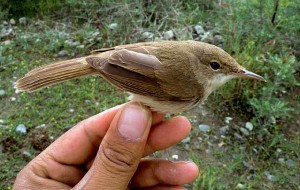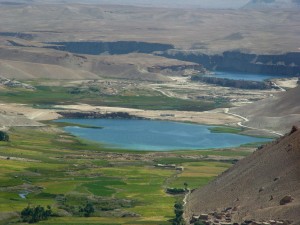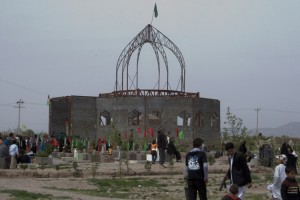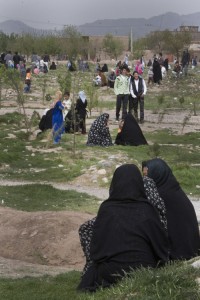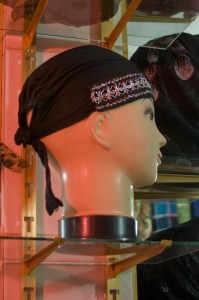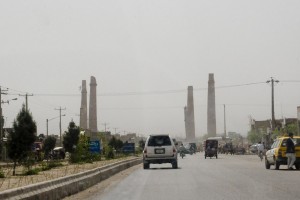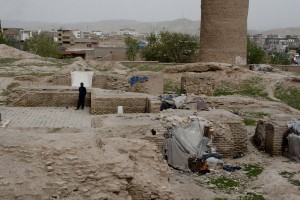AWP 2010
Newer Entries »How can this unassuming little bird help preserve local culture and keep the peace in a remote corner of Afghanistan?
Saturday, April 10th, 2010
The Global Exchange group and I met with Dr. David Lawson of the World Conservation Society (WCS) in their small office here in Kabul. I was surprised to learn that conservation here in Afghanistan has wide ranging effects beyond just saving wildlife. It’s not a matter of choosing to help cute fuzzy critters over people. Quite the opposite, in fact.
In the early 1500’s, during the time of the emperor Barbur, Afghanistan was a garden country. Since then, population increases and recently, 30 years of war have devastated the environment. In 1977, 40% of the land was covered with trees. By 2002, that percentage had decreased to 10%. The Soviets destroyed a large number of trees, but additionally, the needs of households for fuel and the high value of some of the timber combined to decimate the tree cover.
Eighty percent of Afghans rely directly on their natural resources for survival, so as these resources are depleted and the effects of the depletion cause even further destruction, society is heading towards social instability and even resource conflicts as people do whatever they need to in order to feed their families.
Even so, Afghanistan retains an amazing biodiversity. The same number of species found in the entirety of sub Saharan Africa is found in the Wakhan Corridor, the panhandle that extends eastward and borders Tajikistan, China and Pakistan. Endangered species include the Marco Polo Sheep, the Siberian Ibex, and the Snow Leopard. (There are approximately 120 snow leopards left in the world) not to mention the Large Billed Reed Warbler. Afghanistan has the largest number of natural varieties of grapes of anywhere in the world. This biodiversity indicates that the environment in these unique landscapes is still healthy.
When the environment is healthy, the cultures that live in them can be preserved and with well thought out assistance, the warbler can help.
WCS’s Afghan 70 staff have already been working in the Wakhan, doing community trainings resulting in 1200 out of 1600 households joining the Pamir Association. Along with so many members comes political clout and a realistic possibility of passing laws to protect their area. Locals are hired as rangers who, without carrying guns, stop people from hunting and set camera traps to monitor the wildlife. Part of the development includes a school program where WCS sponsors 13 schools giving the students an environmental awareness within the curriculum. In the remote High Pamirs, (accessible only by foot and by yak) the schools are in tents and teachers are sent in only for the summer.
All of this leads to developing tourism, which can increase the wealth of the area and preserve the cultures if done right. With the photographs from the camera traps and wide community support, the Pamir Association can encourage the parliament to pass laws giving exclusive tourism rights to the Association, which can manage the professional tourism companies. This way, the tourist money can be used for the good of the communities and to make their projects sustainable. The people seem to understand that the more Marco Polo sheep they have, the more visitors will come and the more money the community will receive.
Band-i-amir Lake, 2003
The lakes of Band-e-Amir comprise the first National park of Afghanistan, established just last year. The park and the nearby area of Bamiyan are host to 126 different species of birds. At present, the park employs 20 trained tourist guides to this beautiful and safe area of the country. My plan is to visit it myself in May.
Posted in Afghan Women's Project, AWP 2010, environment | Comments Off on How can this unassuming little bird help preserve local culture and keep the peace in a remote corner of Afghanistan?
Herat part 2
Friday, April 2nd, 2010
For the Hazara ethnic group in Herat, Now Ruz, the Persian and Afghan new year, was celebrated at the shrine of Said Mustafa. People go there throughout the year to pray for cures and this is the focal place of their Now Ruz activities
We arrived a half-hour late for the ceremony where they moved a pole of flags from one stand to another.
By the time we arrived many had already left, but others were hanging out in the graveyard on the property.
It was interesting that there were only a few burkas here and there in this very conservative city. Most of the women wear the Iranian Chador or a more modern chador-like outer garment.
When I was in Iran in the ‘70’s, women just wore the Chador, a half circle of cloth that goes from the top of the head to the ground. Here and now, they wear a little cap underneath.
Later in the day we went to a mini-mall mostly full of shops selling evening ball gowns,
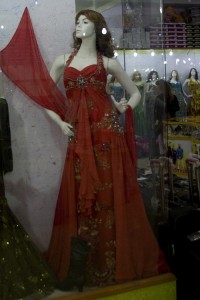
jackets (for modesty), Chador cloth and lounge wear. It was so odd to see those things selling side by side. Inside one shop, my companions wanted to try on one of the jackets in the window, so the sales clerk obligingly pulled one of the manikins out of the window display by putting one hand in her crotch and the other on the shoulder. Then he disrobed her, handing the jacket to my friend to try on, leaving the blue jean-clad but bare breasted model out for the entire rest of the time we were in the shop.
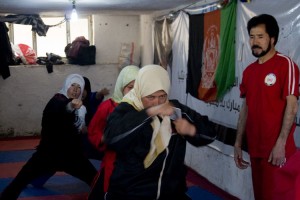
I’ve encountered other contradictions to “common understandings” here and there. The other day I interviewed five students from a Tai Kwan Do class taught by a male instructor. This fellow has taught over 700 girls in his tiny dojo, with some of them wining prizes in international competitions. He instructs them all for free, earning his living from teaching the boys. Some of these girls heard about the class and asked their parents for permission, but in other cases, the parents found out about the class and encouraged their daughters to join, in spite of having a male instructor. I had come across these girls performing (and being filmed for TV) at a Women’s Day event and chased them down for an interview.
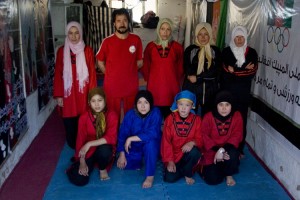
I also interviewed Elaha Surur, a former contestant on Afghan Star. (It’s the Afghan version of American Idol.) She talked about the negative repercussions her TV performance had on her family, how most of her relatives no longer speak to her parents. She now lives in a 3-room house with her sister. When I arrived for the interview, her “friend” was there and he filled in bits and pieces in the interview. Later, when I asked her to sing, she called another friend to accompany her on guitar.
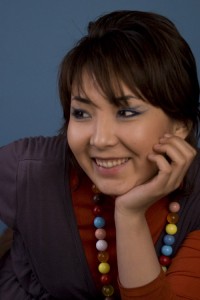

Posted in Afghan Women's Project, AWP 2010, Other, women | 1 Comment »
Herat part 1
Thursday, March 25th, 2010
Just back from a short trip to Herat, an ancient cultural center located on the Harīrūd river in western Afghanistan. First settled five thousand years ago, Herat has always been regarded as the cradle of Afghan civilization, Like in Egypt, as one flies over sandy wastelands, a straight line changes the landscape to one of irrigated green fields and trees.
Shakila, the woman who visited us last summer invited me to spend the Now Ruz (New Year) holiday with her old friend from nursing school, Soleha, her husband Ali, and their 4 year old daughter, Munis. They live in a nice apartment with gorgeous pink marble stairs, two bedrooms, a “squat and squirt” toilet and no internet. Soleha has become a midwife and has opened her own midwife clinic/pharmacy. (One item she sells at the pharmacy is Happiness brand Depo Prevara.) She cares for her family during the day until 4pm when she opens her clinic. Assistants at the clinic watch Munis while she works. The day Shakila and I visited, she had a non-stop flow of patients for pre-natal care, birth control, gyn issues and post-partum check ups. Lab work takes weeks to return and she doesn’t do routine pap smears. She says that the women prefer her to a doctor because she takes the time to listen to them and if she doesn’t know something, she works hard to find out.
The following day we went touring around. The mosque and seminary complex completed by Queen Gowhar Shad in 1418 is now rubble with only five towering pillars remaining. Among the dirt hillocks and low mud brick walls remaining, heroin addicts have fashioned huts out of rubble.
Gazar Gah is the burial place of Ansari of Herat, a renowned and well-loved Sufi poet who died in 1088.
Here is one of his poems:
Give Me
 |
by Khwaja Abdullah Ansari (1006 – 1088) TimelineEnglish version by Andrew Harvey Original Language |
|
O Lord, give me a heart
I can pour out in thanksgiving.
Give me life
So I can spend it
Working for the salvation of the world.
Inside this shrine and others also offer an oasis where women can gather to visit with each other in this conservative city where there are few places for women to “hang out” in public.
Next we visited the Haji Galton Wali shrine, also known as the shrine of the “Rolling Saint”. When I visited here in ’03, it was full of men and I was told to come back on a “women’s day”, which I couldn’t do. This day there were only a few people, so I took the opportunity to give it a try. My attitude was that I don’t believe in it, but I don’t disbelieve, either. I lay my head on a stone for that purpose, crossed my ankles, made a wish and the shrine-lady there gave me a push to start me rolling. It didn’t really work. The few rolls I did took effort. I took that to mean that I wasn’t going to get my wish. I changed wishes and this time once I got started, it felt as though I were rolling down a gentle hill. I came to a stop in the middle of the “yard” and wondered if I could roll more so I tried to continue to roll under my own effort. This time it was hard, not natural like the rolling was earlier.
Posted in Afghan Women's Project, AWP 2010, women | Comments Off on Herat part 1
Business Student Interviews
Thursday, March 18th, 2010
My head is swimming from transcribing the interviews of four students of the IEEW. (The Institute for Economic Empowerment of Women, www.ieew.org)
When I listened to Rahela describe her yard-long list of activities that she had done over the years to provide education, health and employment services for women, I was wondering what anyone in the West would have to teach her. What she (and others) appreciate about what IEEW and other business training organizations have to teach are the mechanics of organization, writing business plans, self-promotion, “wayward employee” management and things like these which aren’t part of Afghan culture.
Throughout all of the interviews I’ve done with these women and others, there is the common theme that they are who and what they are because of the support they got from their families. And they feel a need to pay it back. Farghana says that her dream for herself is to be an internationally known successful businesswoman, but also “I would be a woman who will take her family along with herself. I know my power,… but I think that my family is my backbone”.
Sometimes they had to fight for that support and prove themselves, like Miriam, a photojournalist, whose father wouldn’t let her travel to Herat with a female foreign colleague. She “worked on him” for awhile until he got used to that idea and later the idea of her living alone in another town on another assignment, then to take a photo course in India, and etc. etc. At this point, when she’s not home by 9 PM, (which is generally unacceptable for women in Afghanistan) he will call her to make sure she’s safe, but he trusts that she’s doing important work. It helps that she’s bringing in a good income.
What finally convinced him is that she told him that when she’s out photographing, interviewing and interpreting, no one sees her as a woman, that they see her as a man because of the way she acts and talks. Really, these fathers are taking a big chance in a society where even rumors of their daughter’s unacceptable behavior can land the woman and by extension their families in serious trouble, if not even prison. I’m seeing that often this “trouble” comes from conservative relatives.
And it’s not only the fathers. Those who are married, must necessarily have accepting and supportive husbands, and not always pertaining to the women bringing in an income. When Sakina and her friends organized the demonstration against the Shia Family Law (in the West more famously known as the Hazara Marital Rape Law), “my family supported me. Especially my husband, because we are like friends.”
Another benefit of that demonstration for her and her friends was the example of how powerful women working together can be. There are many cases of women doing things and creating organizations to help those less fortunate, but many who participated, felt as Sakina did, that “when we make contact with another woman and share ideas and our skills, we can improve ourselves.”
Posted in Afghan Women's Project, AWP 2010, education, women | 1 Comment »
Reconciling with the Taliban
Friday, March 12th, 2010
3-11-10
My purpose in this blog is to be your eyes and ears on the ground, to report what I see and hear. My agenda is to seek out things that are going right, that are working, that can give one cause to hope that in a few years or decades, life for Afghans will be improved. This must also be balanced with other things I see that go in the opposite direction. Afghanistan is a perfect example of the story of the elephant and the blind men who, each feeling a part of the elephant and suppose it to represent the entire animal. I will share the bits and pieces that I discover and leave it to you to draw conclusions, knowing that even this is but a small window into the entire scene.
We met with Professor Akhram of the National Independence Peace and Reconcilliation Commission whose plan for peace is to integrate Afghan Taliban into society. First, he divides Taliban into the (bad) Pakistani Taliban and the (mostly good) Afghan Taliban. Five years ago he (and his cohorts) began meeting with 23 thousand tribal elders all over the country. These elders know how to talk with the villagers to persuade them not to send their kids to join the Taliban and to persuade the Talibs from their villages to give up fighting and join the peace movement. Of the nine thousand who turned in their weapons, 25 of them were high-level Taliban. Those who join get a paper stating their new status which they can present to US soldiers in order to avoid trouble with them. He claims that 85% of the Afghan Taliban are reconcilable, that they agree to schools for girls (as mandated by Islam) and for women to work outside the home. This last is a moot point in the villages.
The downside is the 6,000 Pakistani Taliban (out of 30,000) who are interfering with this peace process and who are funded and controlled by the Pakistani ISI (intelligence service). The Taliban in Marja are of this sort.
We got to meet with Professor Ramani, an ex-Talib, third or fourth from the top, who is now a senator in the parliament. He believes in women’s rights to school and says that as long as the religious conditions are met, women should be allowed to work. He himself has no problem working with women. He said that many of the Taliban excesses were from “wrong thinking because of war times”.
I got to meet with Prof. Akhram a second time and when I mentioned Prof. Ramani to him, he said that he didn’t trust him because he has property in Islamabad, Pakistan, and a whole network of Pakistanis.
When I asked the house guard here at the guest house, he told me that most of even the Afghan Taliban are “bad guys”. Others say that unless they are integrated into society and given jobs, there will be no peace.
I will be asking about this throughout my other interviews.
Posted in Afghan Women's Project, AWP 2010, Other, political, Taliban | 2 Comments »
Upcoming interviews
Sunday, March 7th, 2010
There is so much going on and so much to say, but when I get home at night, I’m exhausted. The Global Exchange tour will be over soon and I’ll have more time to write. Soon I’ll be interviewing the top Afghan woman general, a videographer who works for Tolo TV, a woman basketball player who once played in Washington DC, some orphan girl scouts and lots more. I’m excited! The lack of rain today is a definite blessing for me, but I don’t understand how they can have muddy streets and, at the same time, so much dust in the air. Downtown, people are starting to wear dust masks to protect themselves.
Posted in Afghan Women's Project, AWP 2010, Other, women | Comments Off on Upcoming interviews
Less than a month till I leave
Wednesday, February 3rd, 2010
And when I go, I’d like to take small (4 mp+) cameras to give to RAWA to help them document human rights abuses against women. If you got a new camera over the holidays and would like to put your old one to good use, leave me a message or send an email and I’ll tell you where to send it.
Afghan women thank you.
Posted in Afghan Women's Project, AWP 2010, education, women | 1 Comment »
Afghan trip 2010
Thursday, January 7th, 2010
Peggy will be in Afghanistan March 1 through May 15th conducting new interviews and getting updates on women already in her exhibit. Join her vicariously by subscribing to her blog. Book presentations early to ensure availability in Peggy’s fall speaking season.
Iraqi Refugee Women’s Project blog
Posted in AWP 2010 | 3 Comments »
